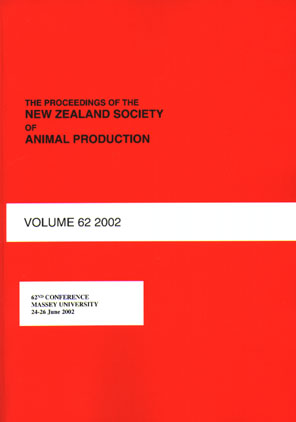Abstract
An extended period of reproductive inactivity (anoestrus)is part of the normal recovery process in dairy cows, following calving. Low body condition at calving and long periods of negative energy balance affects the length of the post-partum anoestrous interval (PPAI). This study examined the effect of feeding two different supplementary feeds through early lactation, on the length of the post-partum anoestrous period. Forty-five mature dairy cows were allocated to either pasture (P; pasture allowance of 35 kg DM/cow/day), pasture plus a cereal (P+C; 3.0 kg/cow/day maize & barley; 50%: 50%) or pasture plus a lipid supplement (P+L; 1.8 kg/cow/day lipid-based supplement, plus 180 ml/cow/day oil drench 33% fish oil: 67% linseed oil), starting in the first week post-calving and continuing for at least 7 weeks (range 7 to 15 weeks). The length of the anoestrous period was measured using twice weekly milk progesterone analyses, ending on the 8th October, 2004. An animal was identified as having ovulated when milk progesterone concentrations reached a threshold (>3ng/ml), this event was categorised as the initial ovulatory event (IOE). There was no effecton the interval from calving to IOE (35.7±3.9 days, 32.8±2.9 days, and 35±3.9 days; mean±SEM) for P, P+C and P+L groups, respectively. There was no effect of supplementation on either live-weight and body condition changes through early lactation. This study showed that when mature cows are fed a generous allowance of pasture post-calving, providing a cereal or lipid-based supplement during early lactation did not reduce the length of the PPAI.
Proceedings of the New Zealand Society of Animal Production, Volume 66, Napier, 300, 2006
| Download Full PDF | BibTEX Citation | Endnote Citation | Search the Proceedings |

This work is licensed under a Creative Commons Attribution-NonCommercial-NoDerivatives 4.0 International License.

